Problem Domain
We chose to focus our project on compliment giving. We know that many people have a desire to be kinder in their daily lives. Giving compliments has been shown to improve both the giver and the receiver’s happiness (Boothby, 2021). Increasing compliments would foster a more positive and connected community; we could imagine this creating an added sense of community and kindness at Stanford amidst the stress and occasional loneliness of college life. Therefore, we decided to focus our domain specifically on increasing compliment giving amongst college students.
We first ran a baseline study to understand the behavior of giving and receiving compliments.
Baseline Study
Methodology
Our intent was to study the practice of giving and receiving compliments, focusing on the Stanford student population. We selected participants by sending a screener out to classmates. Since our target audience is college students, the only question we used to eliminate participants was “Are you a college student?”. We collected basic information like major, race, and gender to ensure we didn’t have a skew in our demographic data that might impact the study.
All 10 of our participants completed the study in full. In our pre-study interviews, we wanted to extract information about the participant’s existing habits and feelings around compliments. We asked them to recall specific instances of both giving and receiving compliments, and an instance in which they thought about a compliment but didn’t voice it. We also asked about when they do and do not feel comfortable giving out compliments.
For the five day duration of our study, we asked participants to fill out a log of the compliments they received and the positive thoughts they had (including whether or not they voiced the thoughts). Participants were asked to add to this log throughout the day. We had participants detail the compliment or thought, the other people involved, details about the environment, and their mood. At the end of each day, we asked participants to look back on their day and record all of the social situations they were in along with their features in a Google Form. We collected this data because we knew that compliments were inherently social, and had an intuition that they were context-dependent.
In our post-study interviews, we asked participants general questions about how the study went and how it felt to record compliments. We then asked them to self-analyze about the particular types of compliments they tended to give and receive.
Findings and Synthesis
For a description of our synthesis process, findings, and how these findings influenced our intervention brainstorming, see the blog post. Some of the main takeaways and images of our synthesis process are included below:
- Minimizing discomfort is integral to encouraging compliments.
- Relationships form the basis of compliment-giving cycles.
- Compliment context is crucial: we want to create a safe space for compliments.
- The close friend compliment space is a bigger opportunity than the stranger compliment space.
- Both superficial and deeper compliments are significant opportunities. Deeper compliments are more difficult to give, so we want to ideate on how to encourage these specifically.

Figure 1: Affinity grouping
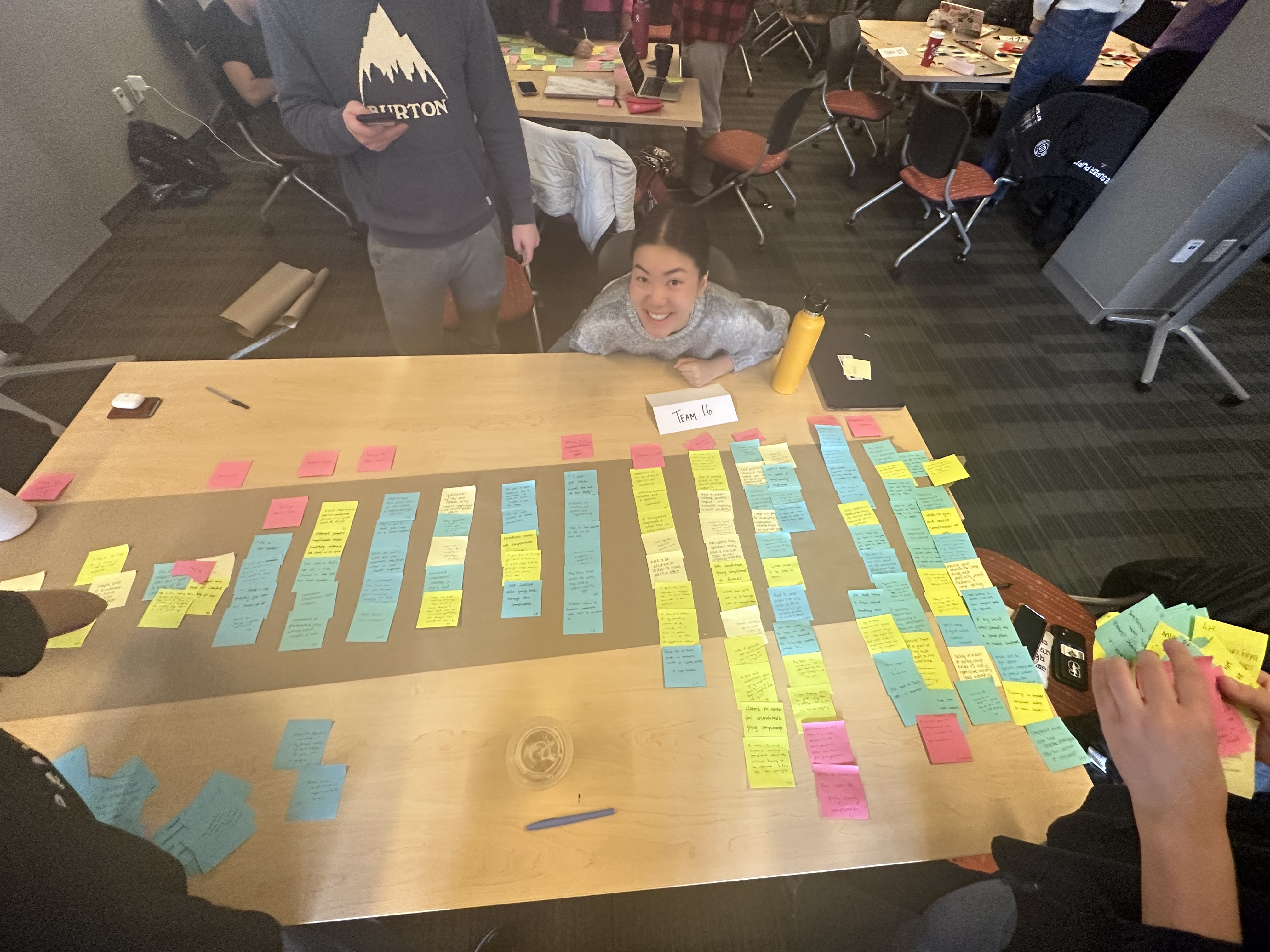
Figure 2: Frequency grouping
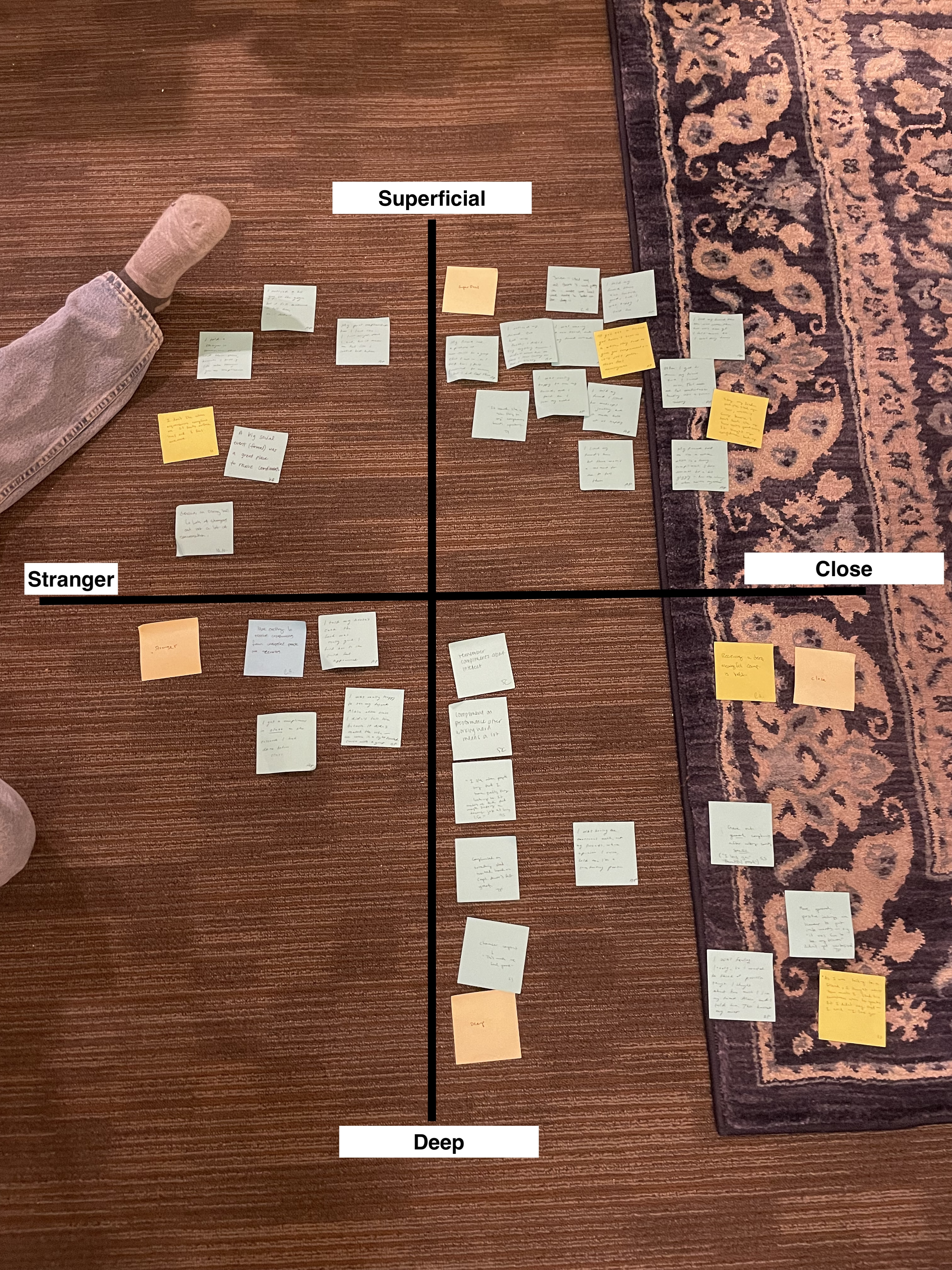
Figure 3: 2×2
We created a connection circle to understand what motivates or demotivates giving compliments. In the connection circle the positive edges are marked in green and the negative edges are marked in red. Additionally, gray lines connect nodes which have a causal relationship, but whether it is positive or negative depends on the context. From analyzing the connection circle from our baseline study analysis and synthesis, a second simplified connection circle was created to highlight the relationship between giving and receiving compliments, and the context behind the compliment.
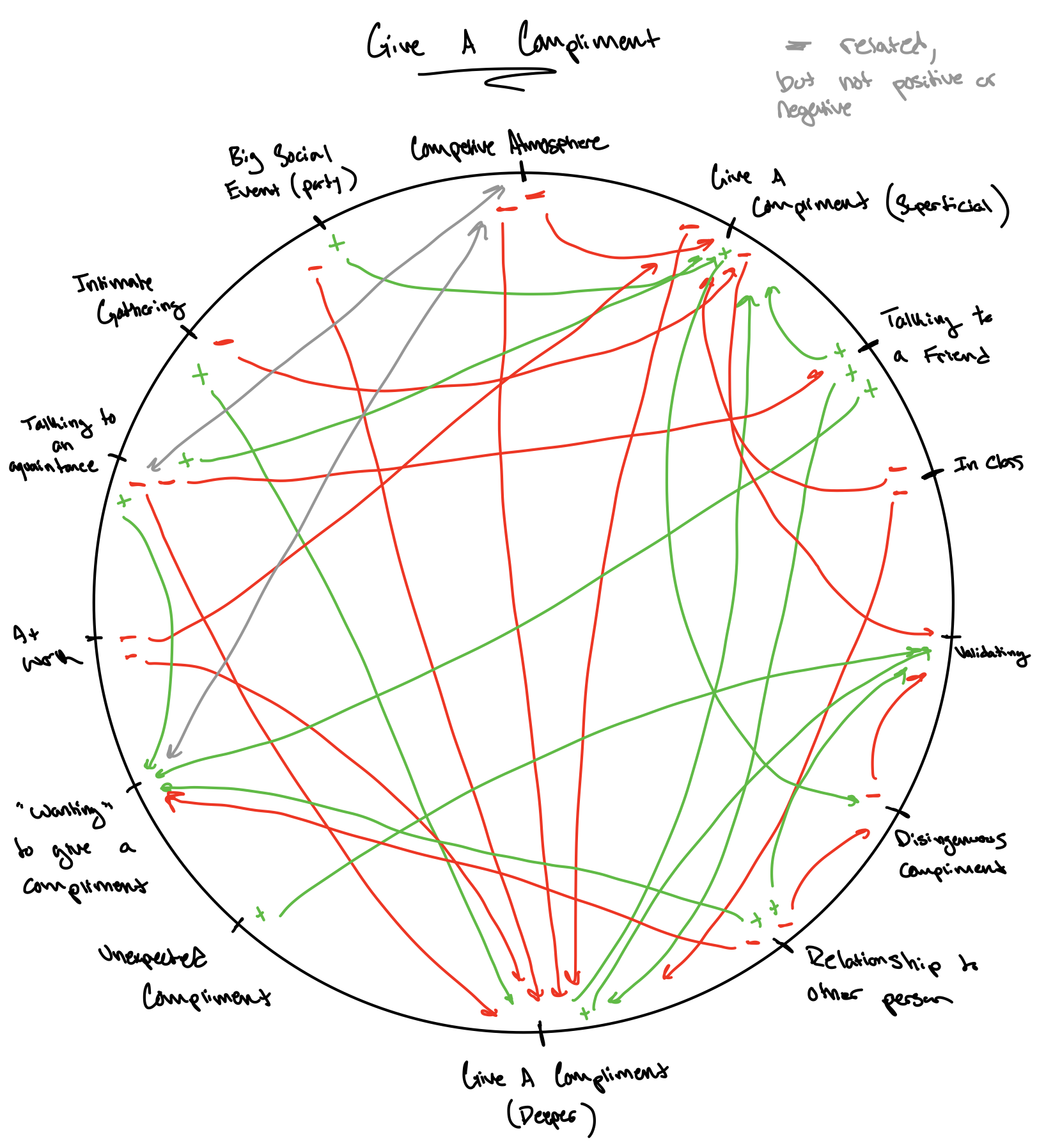
Figure 4: Connection circle based on raw baseline study data

Figure 5: Simplified connection circle
The fishbone diagram helped tease out reasons for not giving a compliment. The environment and timing of a situation had the largest bearing on whether or not a compliment was given. Possible interventions to overcome the obstacle of context might look at alternative ways to deliver compliments which aren’t anchored in the moment the compliment originates from; if a positive thought provokes a compliment in an inappropriate time, might there be a way to deliver this compliment through a more appropriate medium, or at a more appropriate time?
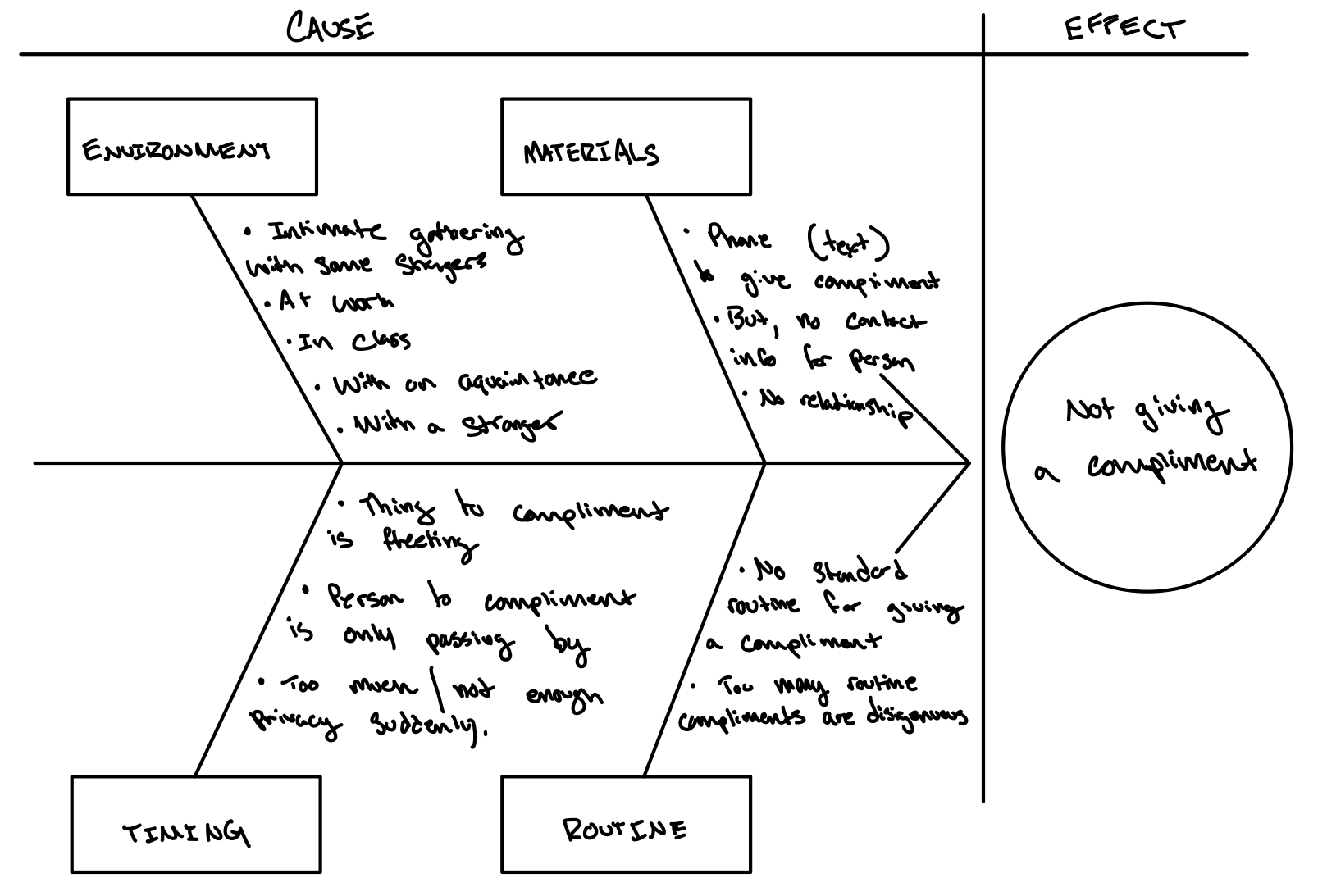
Figure 6: Fishtail diagram
For a more in depth explanation of our connection circles and fishtail diagram, see our previous blog post.
Comparative Research Analysis
As we had not yet synthesized our insights from our baseline study, we wanted to analyze a diverse set of competitors. Some were explicitly focused on compliment giving or receiving, while others were centered around generating positive thoughts more broadly. See our full competitive analysis here.
Many of the competitors we studied do a great job of getting users excited about receiving compliments. Notably, Gas teases users with hints on their compliment givers, and “flames” users when they’re complimented. Similarly, Slay asks users to answer 12 compliment-style questions about their friends, allowing those who submitted questions to see their received compliments. We plan to take inspiration from this, specifically, incentivize users to give compliments through making them excited about receiving.
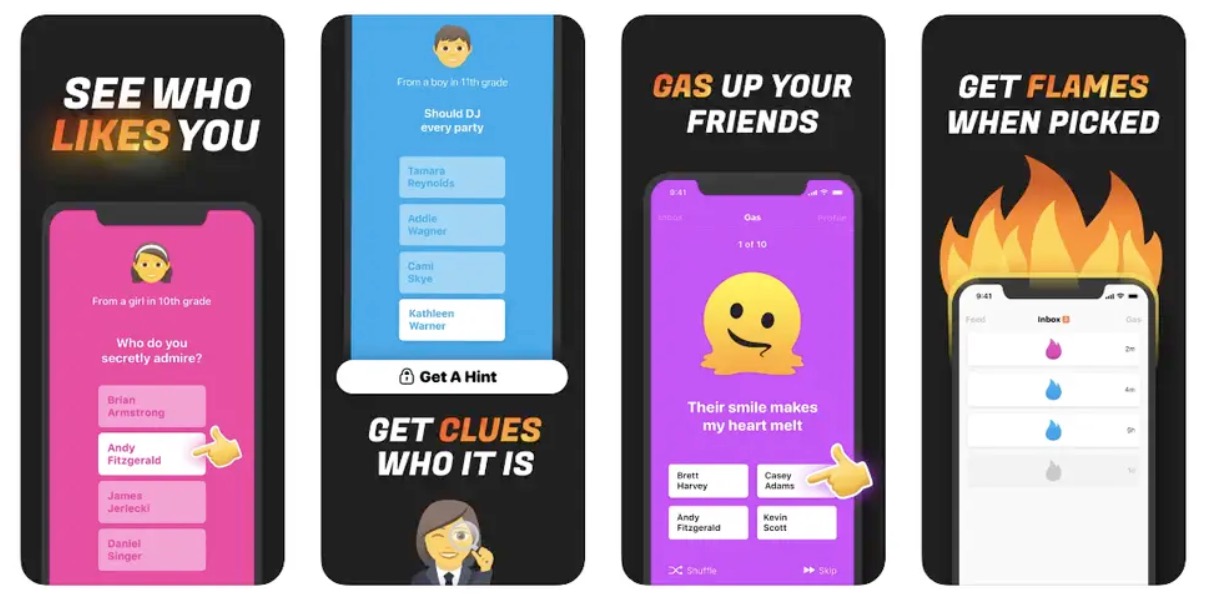
Figure 7: Gas
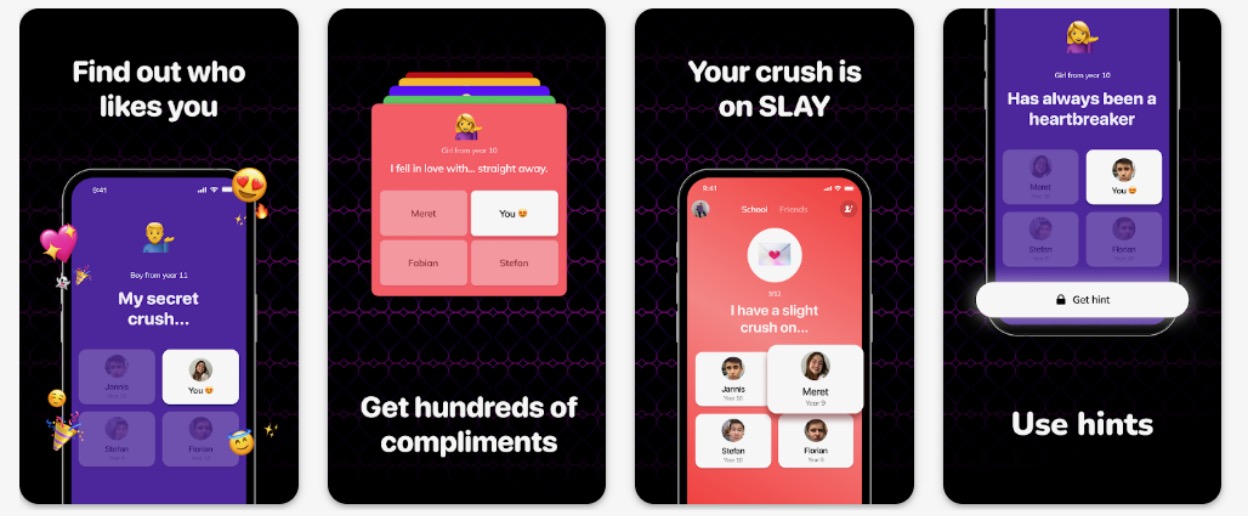
Figure 8: Slay
Common weaknesses among competitors include lack of spontaneity and irrelevant compliments. Most notably, Emi, an app geared towards helping people improve their relationships, prompts specific compliments throughout the day, often at inappropriate times. Compliments sends you compliments created by people all around the world, many of which you will not know personally. Our product will encourage users to think of their own compliments, and only allow users to give and receive compliments within their identified network (e.g., through accessing Contacts) to ensure authenticity and relevance.
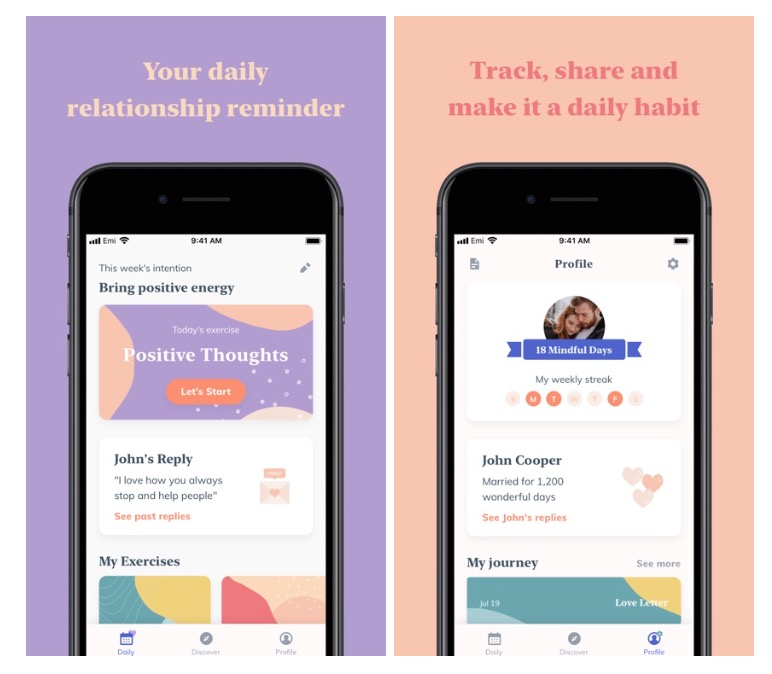
Figure 9: Emi
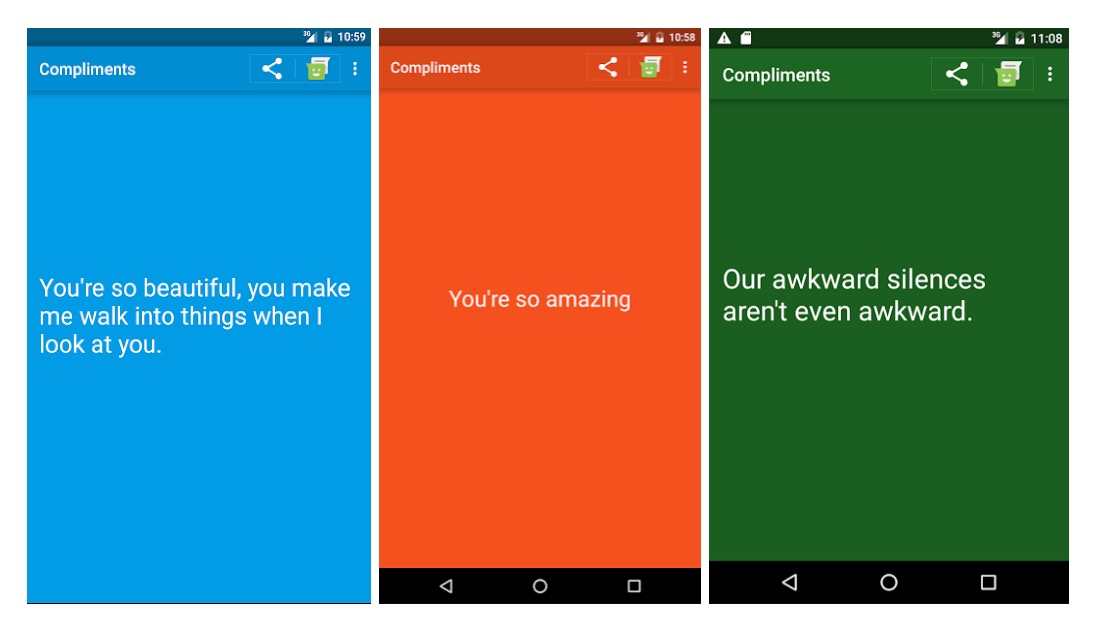
Figure 10: Compliments
We created a comparative matrix to identify an open area of the market to target.
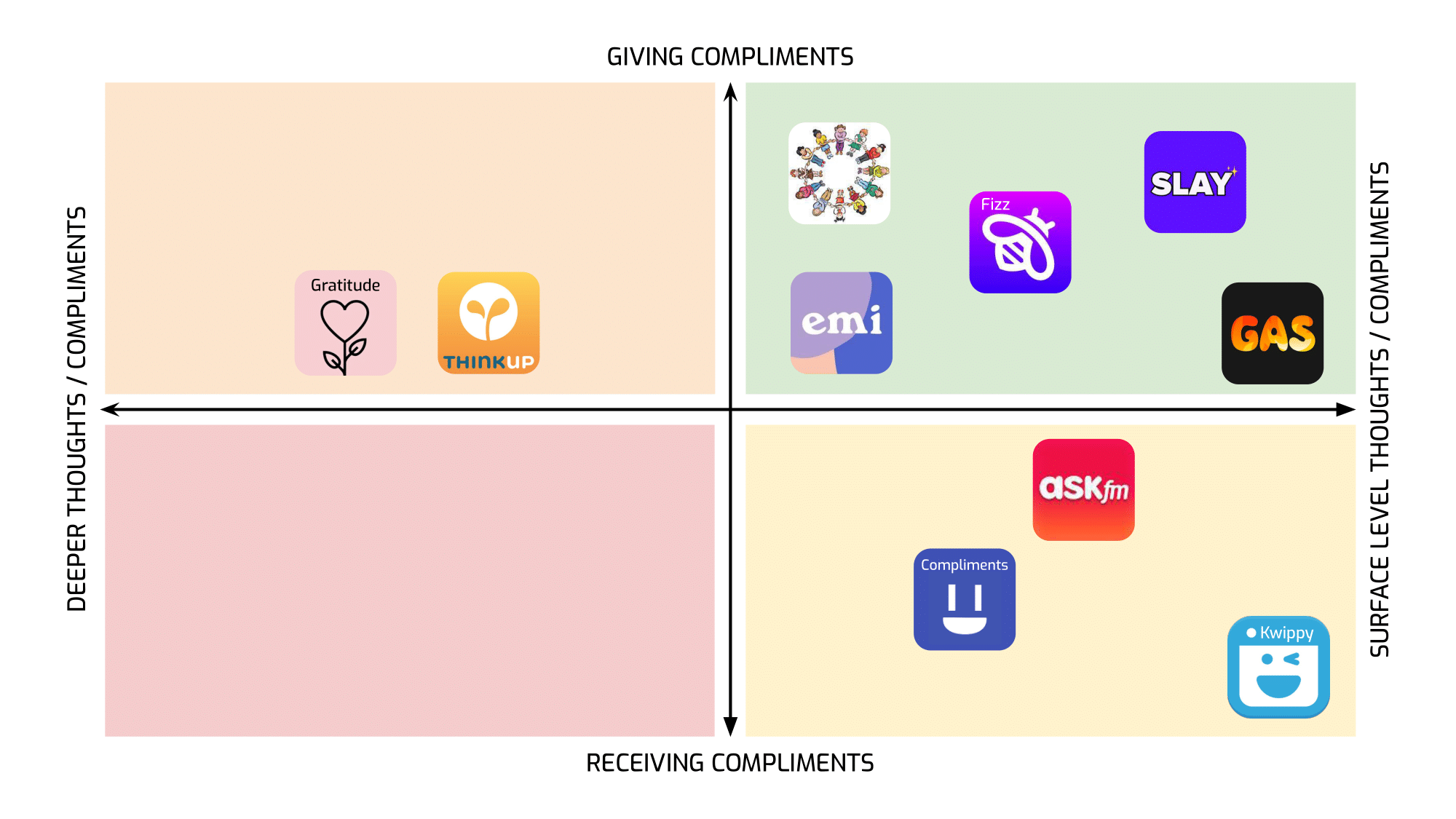
Figure 11: Comparative matrix
Competitors are slightly balanced across giving versus receiving compliments. A slight focus on giving is likely due to the fact that it is easier for products to intervene on the giving end. Prompting users to receive compliments is less intuitive. Our product plans to adhere to this model: enable more compliments received through prompting users to give more compliments.
The main differentiator for our project is encouraging the delivery of deeper, more meaningful compliments. All of the competitors that facilitate giving or receiving compliments focus on surface level ones. The solutions that focus on deeper thoughts are centered around introspection; they do not facilitate communication between users. While our baseline study revealed that giving and receiving superficial compliments–on appearance, personality, etc.–does feel good, we found that users find it difficult to express more heartfelt thoughts to people in their lives, particularly because it feels inappropriate to do so in person outside of a special occasion.
Literature Review
After understanding the competitors in the space, we wanted to gain a deeper understanding of what research had been done in the past in this area space. We gathered 10 different articles focused on the behavior of giving and receiving compliments. Our main insights are listed below, but for the full list of reviewed articles, article summaries, and detailed key insights view our full literature review process here.
Interpersonal relationships
Compliments are powerful for developing a deep, cooperative relationship between two parties and seeing the positive effects of a compliment correlates with the compliment giver having an increased interest in expressing compliments.
Individual benefits
Being in the habit of giving compliments helps individuals “appreciate what’s good in those around us”. These simple acts of kindness can go a long way in an individual’s life.
Gender differences
The most common compliment in unstructured settings is between women about appearance but appearance based compliments can also lead to impaired cognitive performance, especially among women.
Challenges
Language and cultural barriers are a key challenge in the area of giving and receiving compliments. Formal instruction can help address this.
Compliments also need to be seen as accurate in order to have a positive effect on the receiver, which may make it challenging to accept compliments for those with low self esteem.
Personas and Journey Maps
After understanding the pain points from our baseline study, competitor market research and past literature, we were able to form a complete picture of our users and their needs.
Grateful Grace
We noticed a large overlap between compliment-giving and gratitude during our baseline study with participants feeling uncomfortable expressing gratitude and deeper compliments in the moment. Enter our first persona: Grateful Grace, an outgoing and insightful friend. She finds herself giving superficial compliments frequently but tends to feel awkward giving deep compliments in lighthearted situations because she is conscious about not ruining the mood. As a result, she saves many of her meaningful compliments for one-on-one interactions or special events (e.g., writing it in a birthday card).
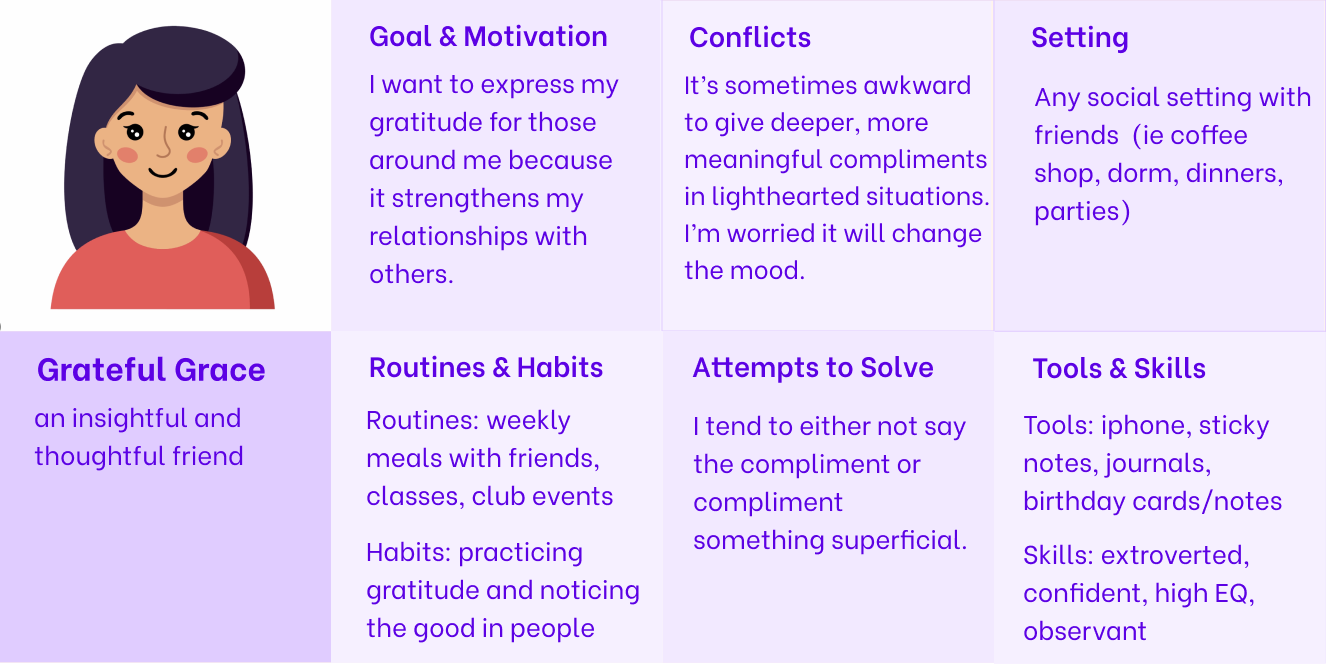
Figure 12: Proto-persona – Grateful Grace
Nervous Nick
We also noticed that many participants had an overall aversion to giving and receiving any sort of compliment simply because they are nervous about feeling like they are in the “spotlight” of a social interaction and also didn’t want to put others in that situation. Enter our second persona: Nervous Nick, an observant yet reserved friend. He wants to make sure that his friends know how much he appreciates them, but tends to not always share in the moment because he is worried about attracting attention to himself and doesn’t want to make others uncomfortable. He also doesn’t like receiving compliments in front of others because he feels that his reactions are being observed and it makes him nervous.
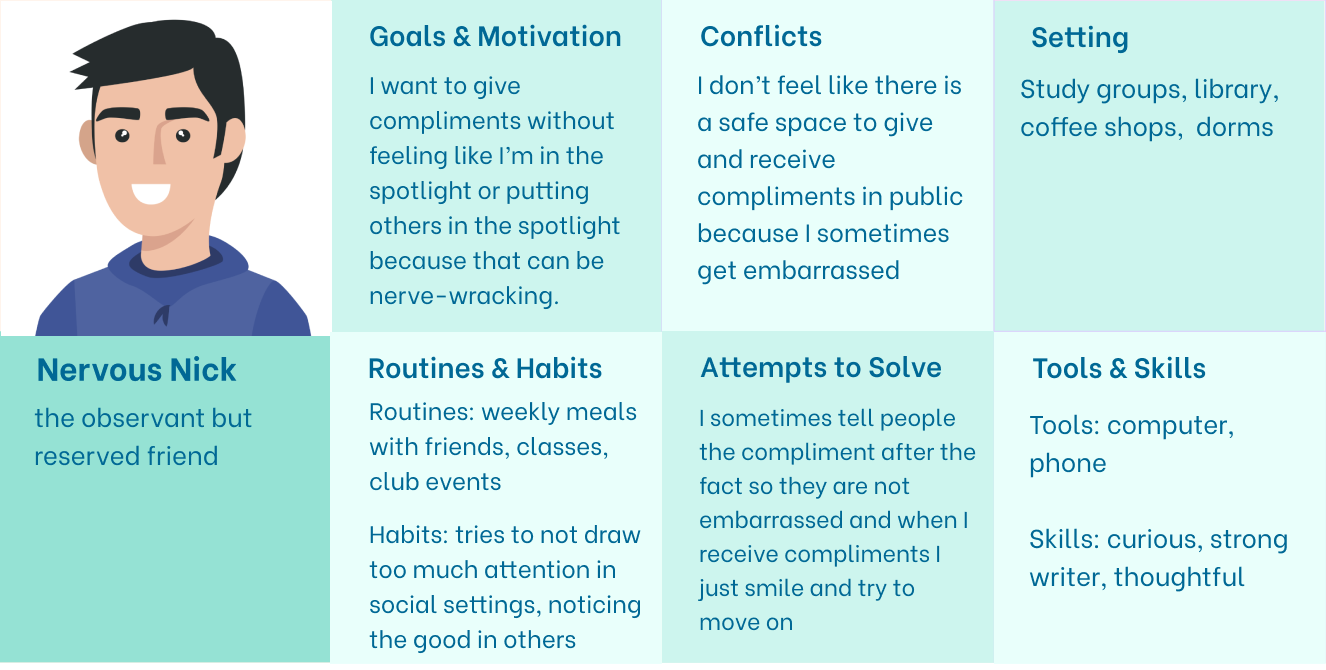
Figure 13: Proto-persona – Nervous Nick
Journey Maps
Once we created personas, we made two journey maps to identify potential intervention points throughout each persona’s day. For Grateful Grace, we can see that there is a clear divide between what Grace thinks and what she actually ends up saying. For Nervous Nick, we can see that he has a harder time activating himself to vocalize his positive thoughts.
These insights left us wondering if/how we might be able to create a safer space for exchanging compliments, especially deeper compliments. What might it look like for people to give compliments retroactively and/or in a virtual context?
See the full analysis of our journey maps here.
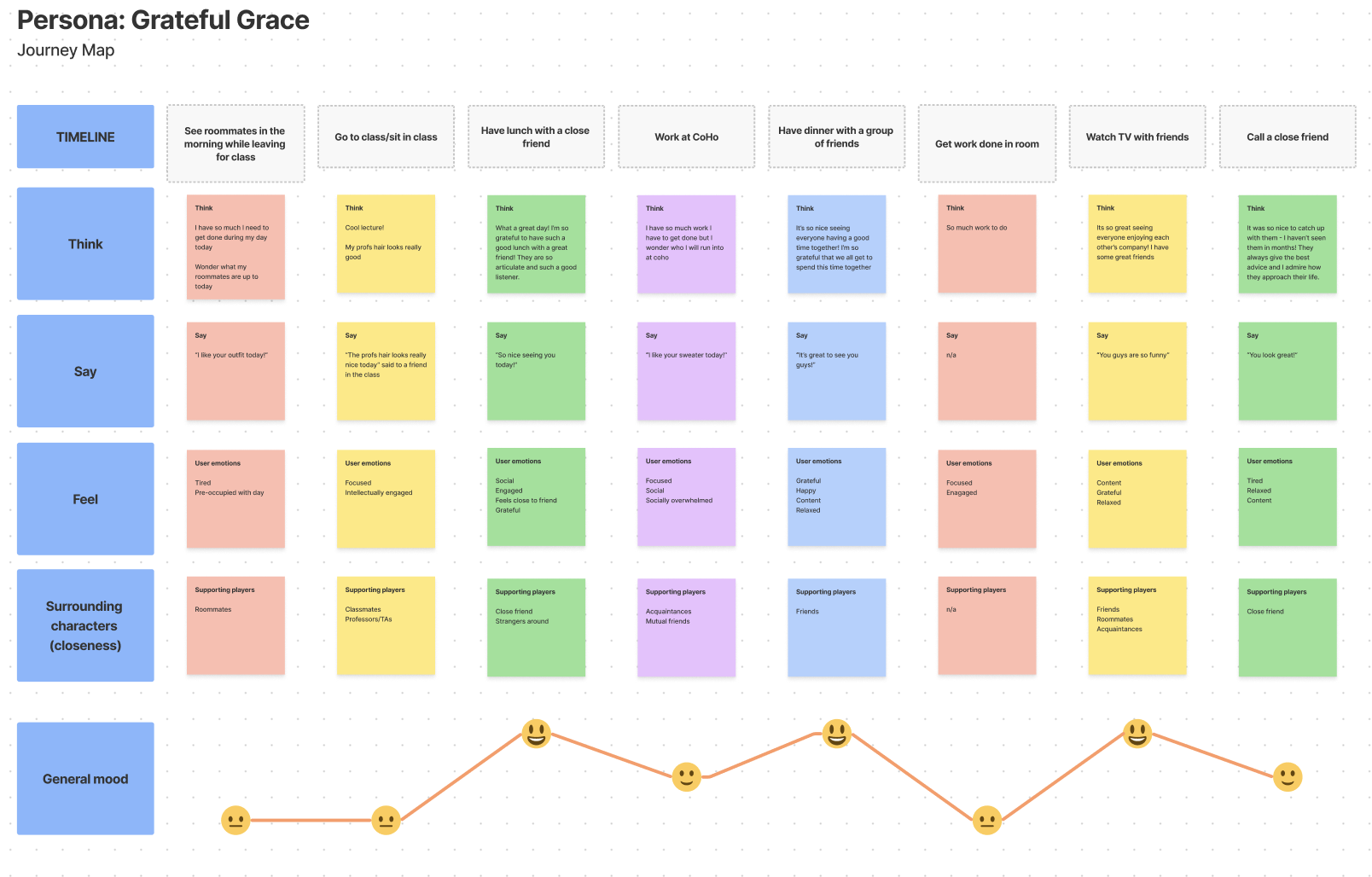
Figure 14: Journey map – Grateful Grace
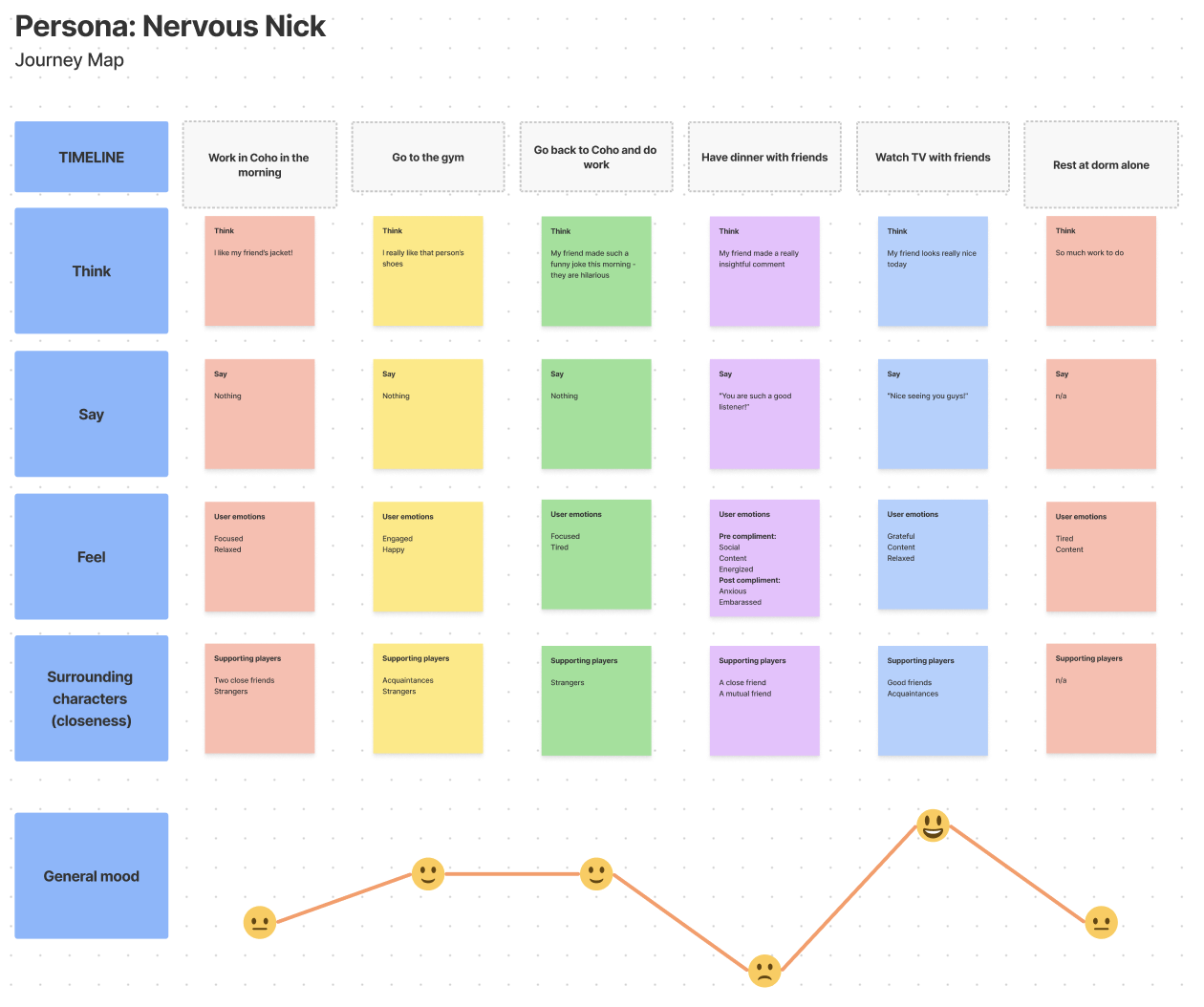
Figure 15: Journey map – Nervous Nick
Intervention and Product Ideation
With our intervention, we wanted to prompt giving and receiving different types of compliments–surface level versus deep–while still giving users the freedom to organically come up with and deliver compliments. We also wanted to provide the option for anonymity, and we were interested to see how that would change the type of compliments sent in. See more on our ideation process for our intervention study (including our top 3 ideas) in the last section of this blog post.
Intervention Study
The goal of our intervention study was to explore compliment giving and receiving in a more structured way. We wanted to see if we could create a space for free and comfortable compliment giving that would encourage authentic and plentiful compliments. Our methodology and steps can be seen here.
Our hypothesis was that people would feel more comfortable giving deep compliments both not in-person and in a closed group setting. We also hypothesized that people would be more inclined to give compliments if they knew that compliments were waiting for them.
Of the 16 participants, 3 did not give any compliments throughout the study so we are choosing to ignore them. Of the remaining 13 participants, 6 people submitted a compliment all five days. Another 6 submitted a compliment at least 3/5 days and one only submitted a compliment once. We can see that the total number of compliments started high and ended up evening out the last 3 days of the study. This is optimistic as we can see that participants continued to be excited about the idea of giving and receiving compliments.
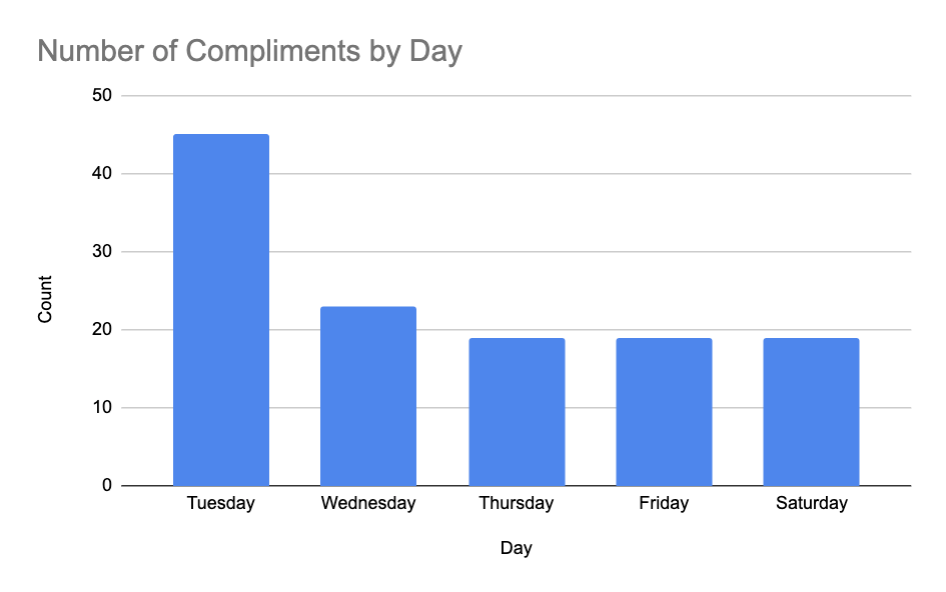
Figure 16: Total number of compliments per day chart
In order to test our hypothesis, we classified each compliment that someone submitted as deep or superficial. We can see that one of our biggest insights is that people gave deep compliments 65% of the time which is much higher than what we saw with our baseline study. This confirms our hypothesis that people did feel comfortable giving deep compliments within the context of this group. This will inform our design moving forward by allowing users to choose who they can send and receive compliments from.
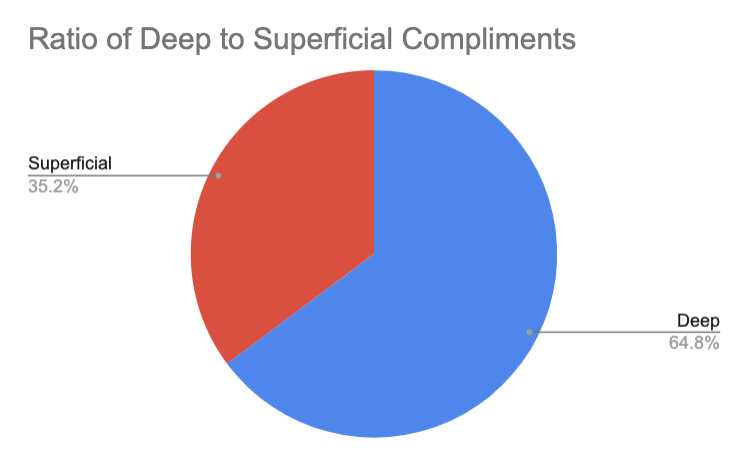
Figure 17: Pie-chart
In general, we also noticed that most of the compliments were sent in after we texted each day at 7pm (the nudge). This reinforces that the nudge prompted the action. We also decided on the second day of the study that we wanted to test if people would react to knowing the amount of compliments they had received the previous day. We texted 3 people who had not participated on Tuesday the number of compliments they received and almost immediately, they were intrigued and decided to send in a compliment. All three of the people we tested this on continued to send in compliments for the rest of the study. This confirms our hypothesis that it is an incentive to know that compliments are waiting for them and that we should consider showing people the number of compliments they have received in our designs.
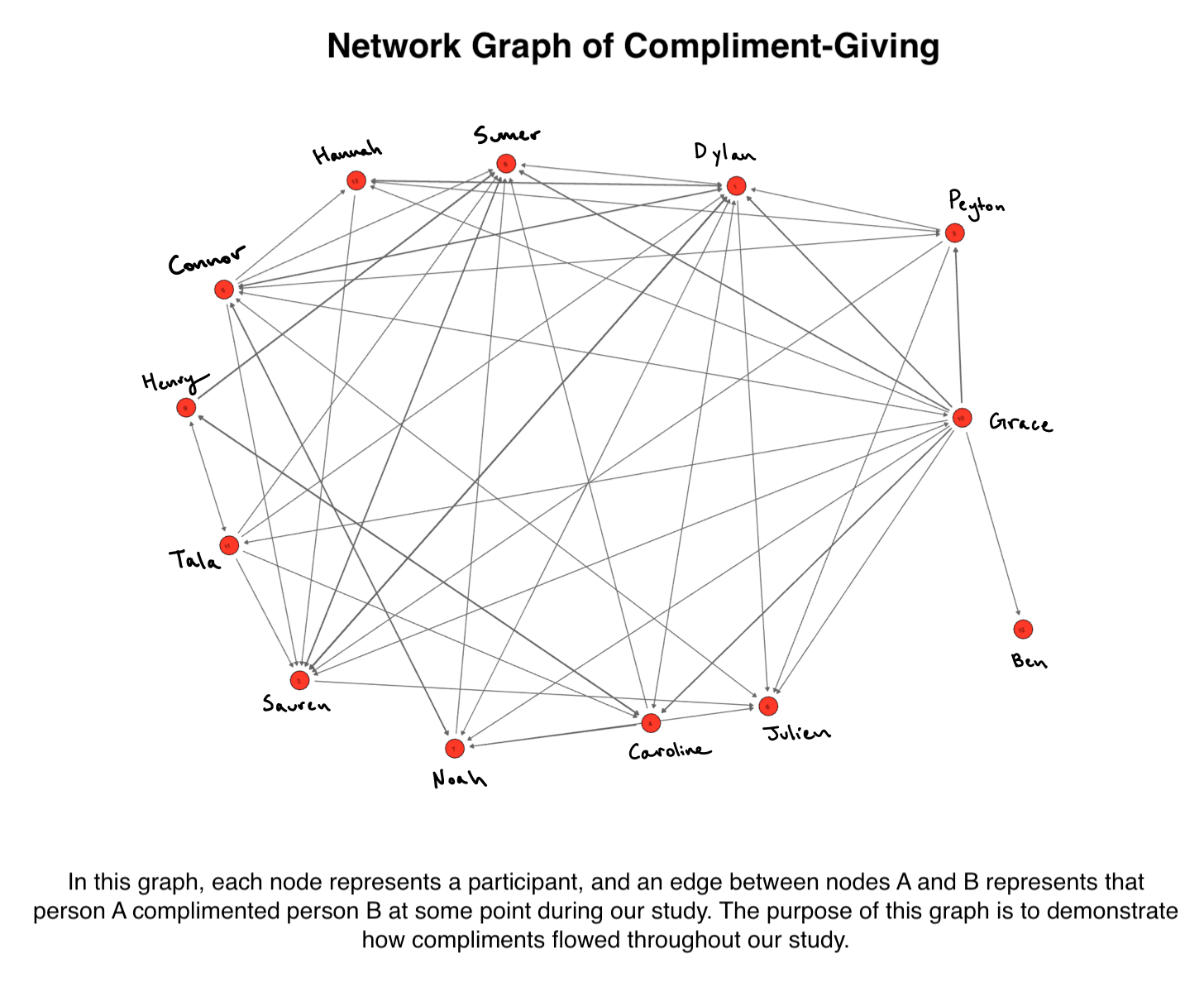
Figure 18: Compliment network
Another insight we gathered was about anonymity. There was tension and different opinions from participants about whether or not they wanted to send and receive anonymous compliments. One participant who sent in all anonymous compliments mentioned that they would have only sent in compliments if they were allowed to be anonymous. Other participants expressed a mix of curiosity and frustration when they received anonymous compliments. Some asked us who sent it in and really wanted to know and others chose to start sending in their compliments anonymously after they received anonymous compliments. We can see that 58% of our compliments were anonymous. This shows us that it is important to be able to choose whether or not they want to send in compliments anonymously.
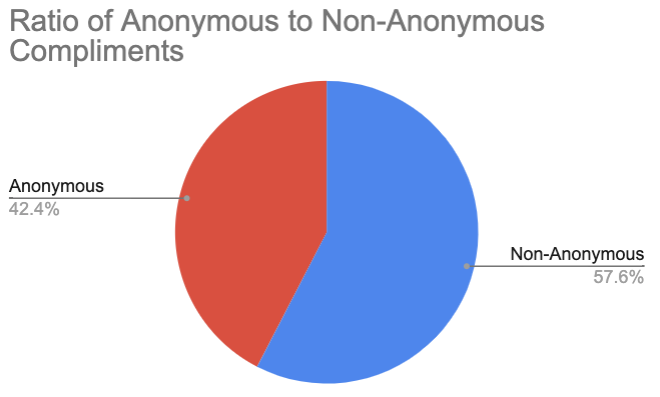
Figure 19: Anonymous chart
Finally, as a moderator it was a lovely experience to see all of the compliments. I don’t think we were expecting it to bring as much happiness into our lives because we were not the ones being complimented; however, reading through the compliments made us all very happy and warm. This prompted us to consider whether or not we should include a compliment wall in our design where users can share compliments that they have received.
Storyboard
Our storyboards outlined the role of our product in the lives of each of our personas, Grateful Grace and Nervous Nick. For grateful grace, she loves to socialize and frequently finds herself at social events, hanging out with friends, and meeting new people. She likes to give out compliments in these situations, but tends to give superficial compliments as deeper compliments seem awkward in large gatherings. The consequence of this is that her friends project these compliments onto their relationship. The solution is to save and share Grace’s compliment at a better time where she feels more comfortable giving deeper compliments.
For Nervous Nick, he often wants to compliment his friends as he is very observant of them, but is shy to do so in public. He is very conscious of not making people uncomfortable in public and has many positive thoughts but tends to not always share in the moment because he is worried that his friends may not receive them well. He also doesn’t like receiving compliments in front of others because he feels that his reactions are being observed and it makes him nervous. The consequence is that Nick never gives out compliments to his friends when they aren’t in private which results in his friend feeling unnoticed and irrelevant. The solution is to deliver the compliment whenever and wherever using a platform which makes Nick confident to share.
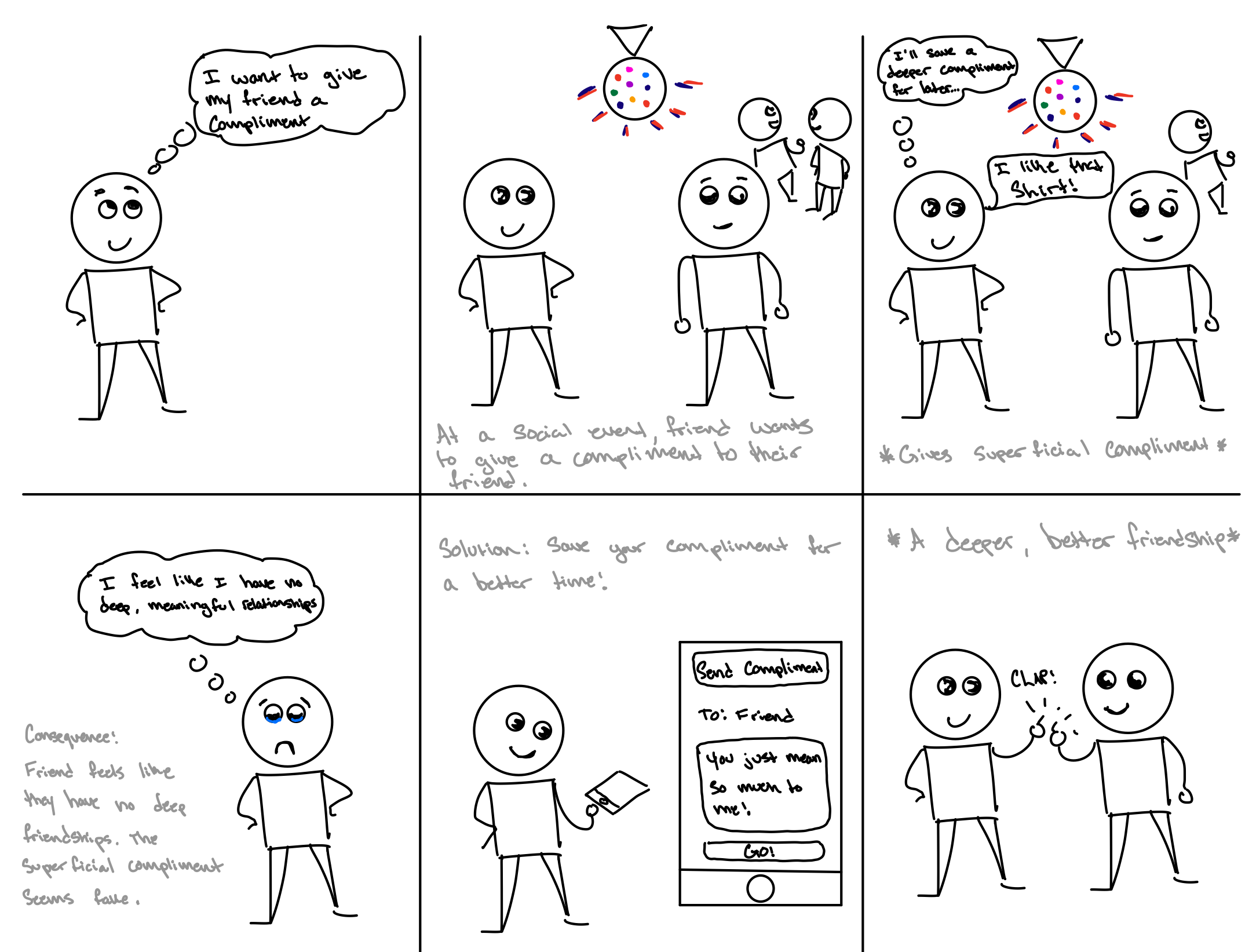
Figure 20: Storyboard – Grateful Grace
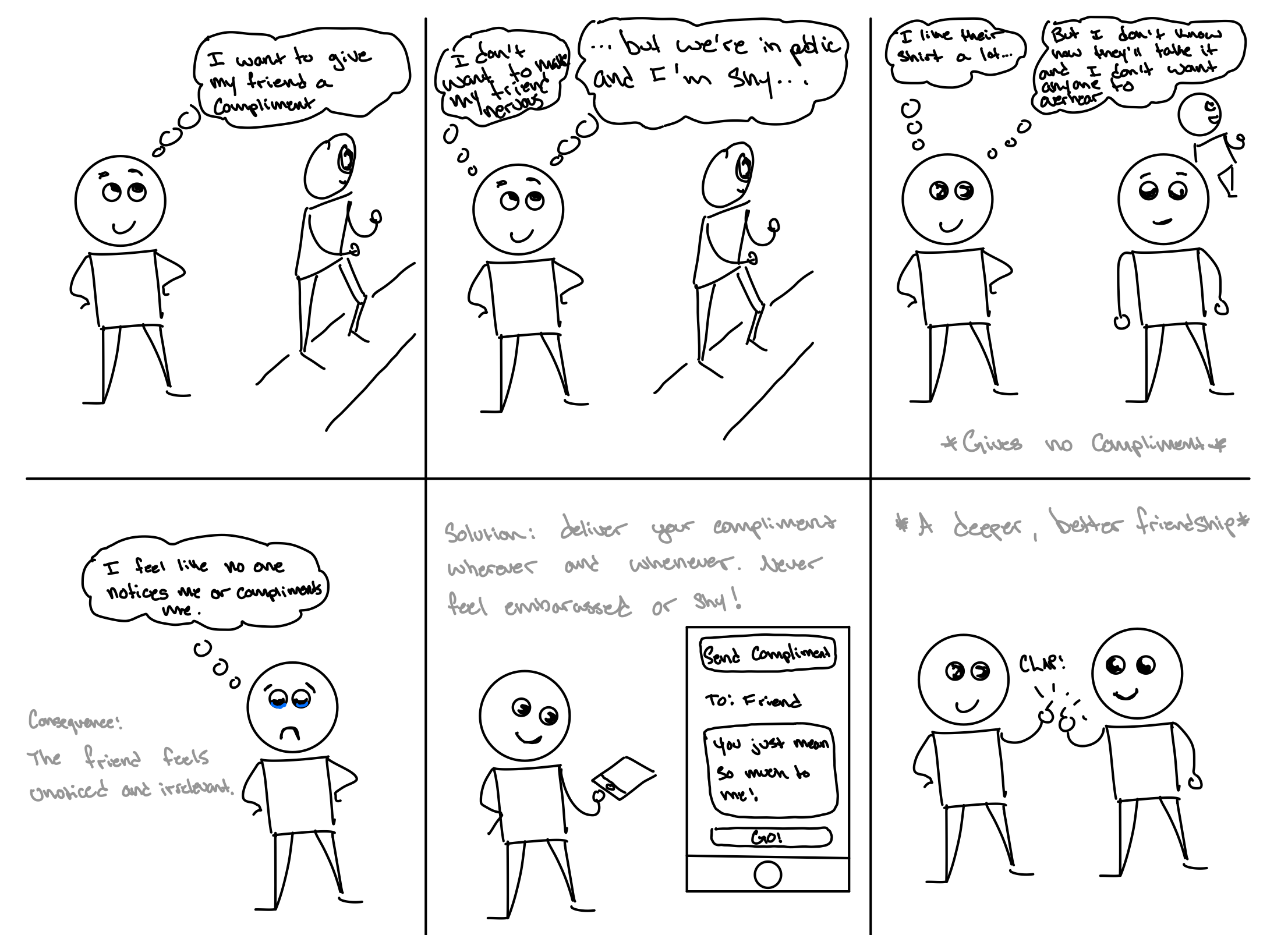
Figure 21: Storyboard – Nervous Nick
Current Direction
We are excited by the depth and quality of our results so far, especially the results from our intervention study. Given these results, we have begun thinking about how we will design our platform with special consideration to the following three areas:
Anonymity for the compliment-giver
Potential feature: Users can choose to give out compliments anonymously or reveal their identity. Upon receiving an anonymous compliment, the receiver can choose to send the compliment-giver a one-time thank-you reply to prompt them to reveal their identity. Only the compliment-giver has final control over whether or not to reveal their identity based on the reply.
Nudges
Potential feature: We are considering having a timed daily nudge to users to remind them to send in compliments. If they have received any compliments so far, we will also let them know as a nudge to get them to send in compliments.
Social group dynamics
Potential feature: Users will also be able to decide whether or not to send a compliment privately or publicly which will put the compliment on a public compliment board viewable by their friends. The user who received a public compliment can also choose to toggle the compliment privacy setting to private, hiding it from the compliment wall for all users.

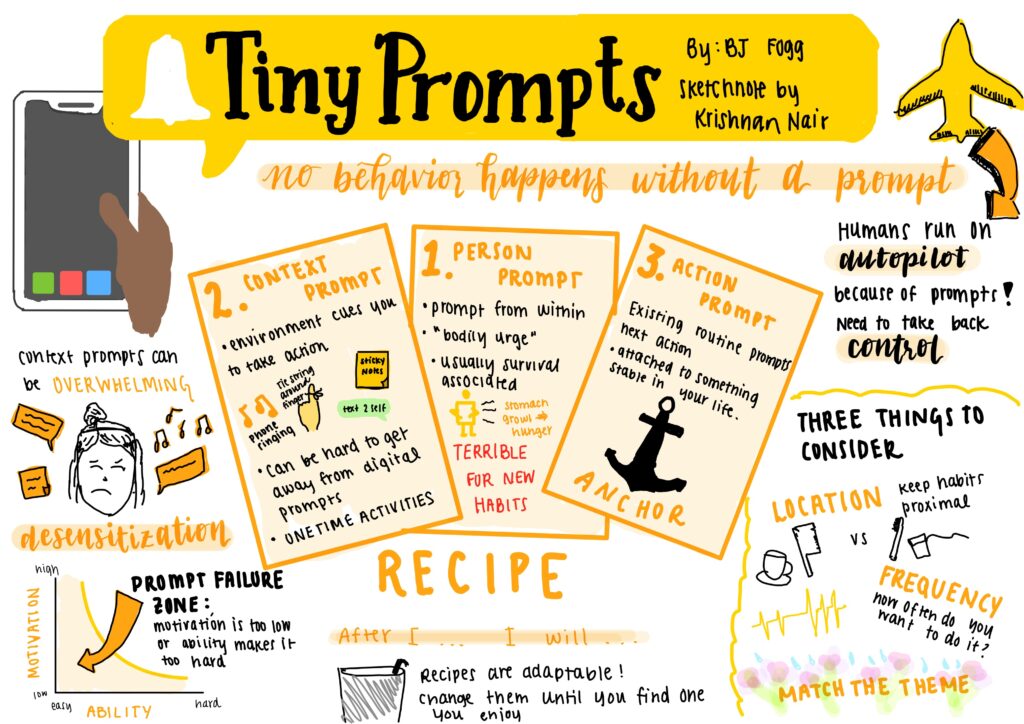

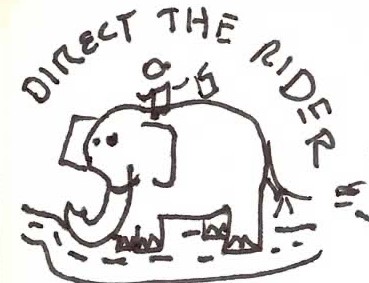
Comments
Comments are closed.